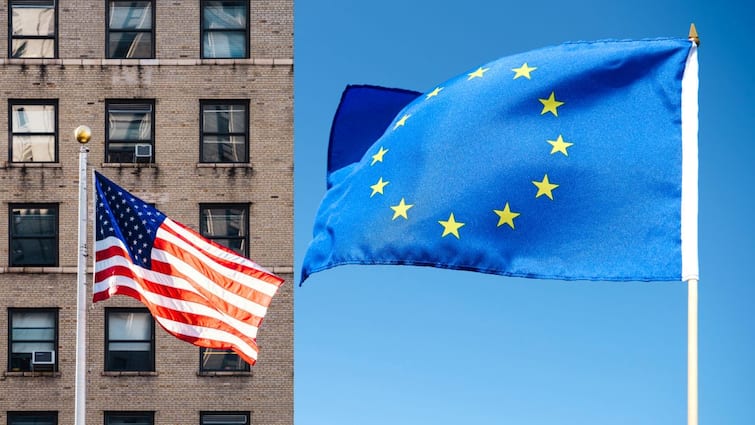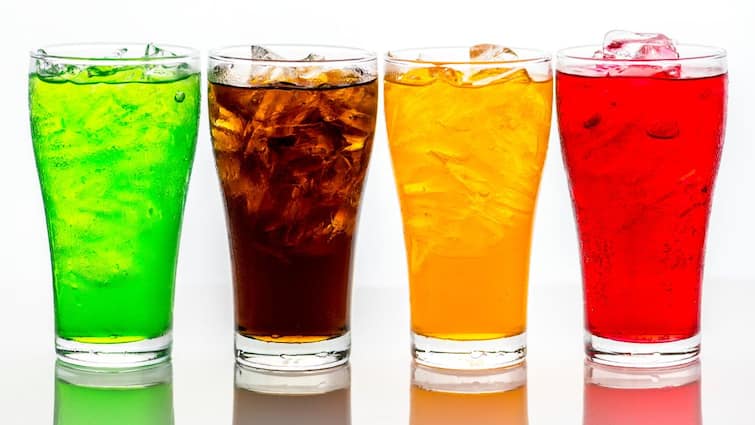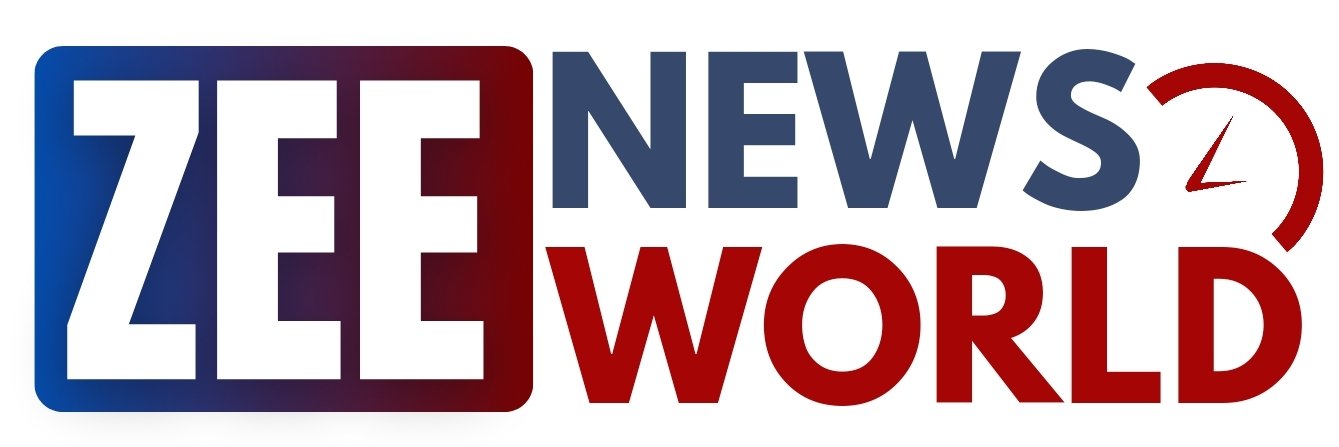US And EU Sign Landmark Trade Deal, Slash Tariffs To 15 Per Cent And Avert War
The United States and the European Union reached a crucial framework trade agreement, halving a threatened tariff rate and easing fears of a damaging trade war between two of the world’s largest economies. The pact, announced on Sunday at Donald Trump’s golf resort in Turnberry, Scotland, imposes a 15 per cent import tariff on most European goods, down from the 30 per cent rate the US president had warned of earlier this month. US President Donald Trump and European Commission President Ursula von der Leyen finalised the arrangement after an hour-long meeting, bringing months of fraught negotiations to a conclusion, reported Reuters. “I think this is the biggest deal ever made,” Trump said, highlighting EU plans to channel around \$600 billion into the US economy and step up purchases of American energy and military hardware. Similar Terms To Trade Pact With Japan The agreement, which follows a $550 billion deal Trump signed with Japan last week, is being billed as a stabilising step for transatlantic trade. Von der Leyen described the US leader as “a tough negotiator” but defended the outcome: “The 15 per cent tariff applied across the board,” she told reporters, adding, “It was the best we could get.” While the deal mirrors key elements of Washington’s recent trade framework with Japan, questions remain over unresolved issues, including tariffs on spirits. Trump said the EU would commit to $750 billion in US energy purchases in the coming years, along with “hundreds of billions of dollars” in defence procurement—benefiting major European firms such as Airbus, Mercedes-Benz and Novo Nordisk if the details hold. German Chancellor Friedrich Merz welcomed the accord, saying it spared Germany’s auto sector from harsher penalties. Prior to the agreement, German carmakers faced a 27.5 per cent tariff on vehicles and parts exported to the US. Also Read : Trump's Tariff Deadline Makes Investors Wary, Sensex, Nifty Open Monday In Red Key Exceptions and Next Steps Though a 15 per cent tariff will apply to most goods, there are carve-outs. Aircraft, aircraft parts, certain chemicals, semiconductor equipment, some agricultural items, and critical raw materials will remain tariff-free. Steel and aluminium, however, will still face a 50 per cent levy, with discussions ongoing about possibly shifting to a quota system. Trump has long criticised the EU for what he calls unfair treatment of US exporters. Another senior official from the American administration said the agreement would open vast opportunities for “our farmers, our fishermen, our ranchers, all our industrial products, all our businesses.” But trade analysts warned the framework leaves scope for disputes. Carsten Nickel of Teneo described it as “merely a high-level, political agreement,” cautioning that lack of detail could lead to “different interpretations along the way.” The deal will be seen as a win for Trump’s trade agenda, but with unresolved issues—including tariffs on spirits and steel—the transatlantic negotiations are far from over.

The United States and the European Union reached a crucial framework trade agreement, halving a threatened tariff rate and easing fears of a damaging trade war between two of the world’s largest economies.
The pact, announced on Sunday at Donald Trump’s golf resort in Turnberry, Scotland, imposes a 15 per cent import tariff on most European goods, down from the 30 per cent rate the US president had warned of earlier this month.
US President Donald Trump and European Commission President Ursula von der Leyen finalised the arrangement after an hour-long meeting, bringing months of fraught negotiations to a conclusion, reported Reuters. “I think this is the biggest deal ever made,” Trump said, highlighting EU plans to channel around \$600 billion into the US economy and step up purchases of American energy and military hardware.
Similar Terms To Trade Pact With Japan
The agreement, which follows a $550 billion deal Trump signed with Japan last week, is being billed as a stabilising step for transatlantic trade. Von der Leyen described the US leader as “a tough negotiator” but defended the outcome: “The 15 per cent tariff applied across the board,” she told reporters, adding, “It was the best we could get.”
While the deal mirrors key elements of Washington’s recent trade framework with Japan, questions remain over unresolved issues, including tariffs on spirits. Trump said the EU would commit to $750 billion in US energy purchases in the coming years, along with “hundreds of billions of dollars” in defence procurement—benefiting major European firms such as Airbus, Mercedes-Benz and Novo Nordisk if the details hold.
German Chancellor Friedrich Merz welcomed the accord, saying it spared Germany’s auto sector from harsher penalties. Prior to the agreement, German carmakers faced a 27.5 per cent tariff on vehicles and parts exported to the US.
Also Read : Trump's Tariff Deadline Makes Investors Wary, Sensex, Nifty Open Monday In Red
Key Exceptions and Next Steps
Though a 15 per cent tariff will apply to most goods, there are carve-outs. Aircraft, aircraft parts, certain chemicals, semiconductor equipment, some agricultural items, and critical raw materials will remain tariff-free. Steel and aluminium, however, will still face a 50 per cent levy, with discussions ongoing about possibly shifting to a quota system.
Trump has long criticised the EU for what he calls unfair treatment of US exporters. Another senior official from the American administration said the agreement would open vast opportunities for “our farmers, our fishermen, our ranchers, all our industrial products, all our businesses.”
But trade analysts warned the framework leaves scope for disputes. Carsten Nickel of Teneo described it as “merely a high-level, political agreement,” cautioning that lack of detail could lead to “different interpretations along the way.”
The deal will be seen as a win for Trump’s trade agenda, but with unresolved issues—including tariffs on spirits and steel—the transatlantic negotiations are far from over.
What's Your Reaction?










































